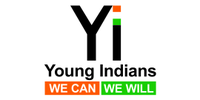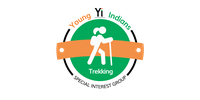The major collaborative behaviors normally seen getting enhanced during HMC are:
- Conscious efforts in building closer relationships with their team mates.
- Honest and transparent communication between team members, which plays a huge role in building trust.
- The ability to handle conflicts in a constructive manner.
- Empathy and inclusivity.
- The sharing of control and the avoidance of power struggles.
- Creating an environment that enables all team members to lead in their area of responsibility.
- Greater collaboration with other teams.
- Greater ability to leverage the diversity in the team and to tap into its collective intelligence.
All of this does not come about by chance. It comes about by the design of the program. Participants are actively engaged in the experiential learning process of planning, executing, and reflecting. The three major elements of the design are:
1. The trek: Designed to force participants out of their comfort zones, thus creating an environment for learning. Each day of the trek has a progressive change in terrain, altitude, temperature, and trekking hours. This keeps participants constantly on the learning edge.
2. The activities: The entire expedition is also broken down into carefully designed activities. Every activity has a specific takeaway. It requires every team member to work collaboratively every single hour of the program.
An example of an activity is teams having to find their own way to the next campsite each day. Participants are given GPX files or a rudimentary map to do so. They have to figure out the way to the next camp themselves.
This requires collaboration as well as creativity. It also requires the ability to decode a map, and negotiate the terrain. All the while participants need to trek as a team, and support each other till they reach the next campsite as a unit - because straying members are not allowed under the rules of the program.
3. Reflection sessions: These sessions are a crucial element, that enables teams to introspect on their learning and takeaways each day. Guided by the facilitator they talk about all the activities of the day and discuss what worked and what did not. They openly share the challenges they faced whether personal, interpersonal, environmental, or skill related.
During reflections, participants also address conflicts in a way that resolves them. Participants strategise and plan for the next day, taking into account the learning so far. They consult on what can be done differently. They become more aware of their strengths and the areas they need to work on.
Doing this over and over again during the 4 days of the program, creates a strong pattern of planning, acting, and reflecting. This process becomes a powerful tool for addressing issues and creating a synergy that results in the team coming together as a cohesive unit.
This program is designed and curated by Indiahikes for Yi, and all information shared has been taken from Indiahikes.





